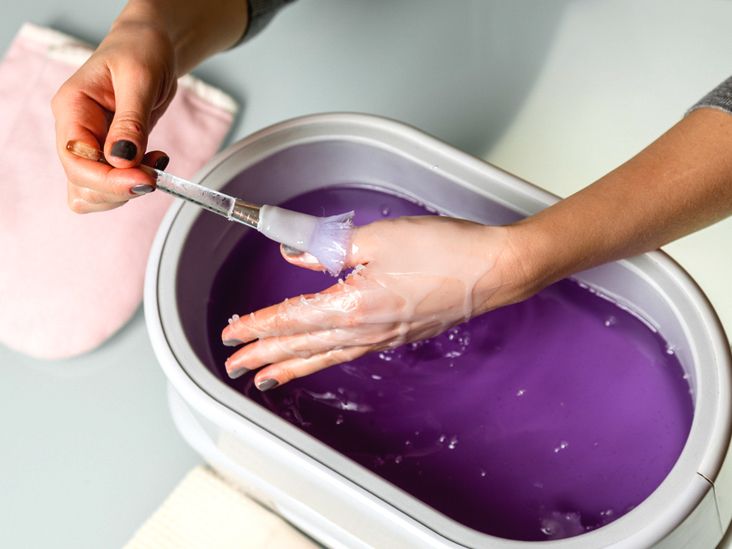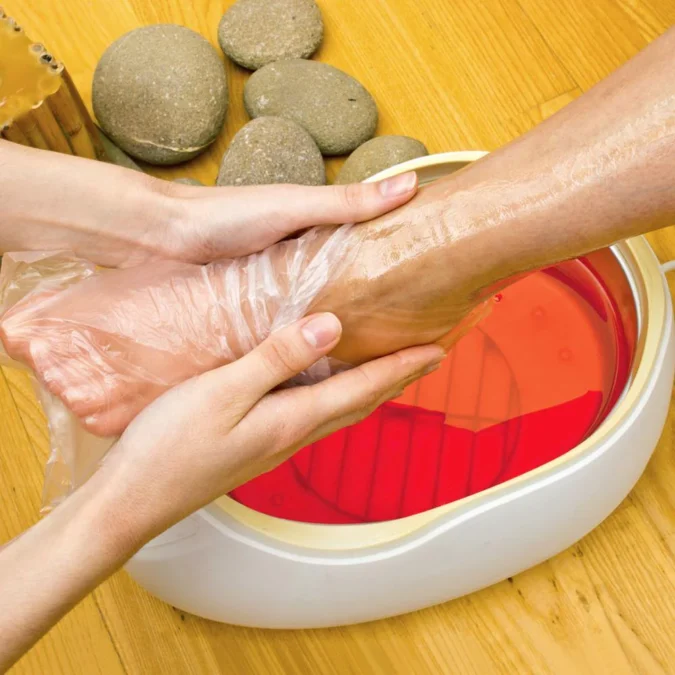Paraffin wax is a highly versatile, colourless, and odourless wax that has found its way into countless households, salons, and industries. Derived from petroleum, coal, or oil shale, paraffin wax is widely appreciated for its wide range of uses, from skincare treatments to candle making. Despite being a humble material, it holds a wealth of benefits that many people are only just discovering.
Understanding paraffin wax involves more than just knowing what it looks like. Its melting point, cooling curve, and therapeutic applications make it a fascinating subject. Whether you are seeking smoother skin, pain relief, or simply want to create stunning candles at home, paraffin wax is a product worth exploring in depth.
What Is Paraffin Wax?
Paraffin wax is made up of saturated hydrocarbons, giving it a soft, smooth texture that melts easily. Typically, the melting point of paraffin wax ranges between 46°C and 68°C, depending on its refinement and intended use. When cooled, the wax follows a consistent cooling curve, helping it to solidify evenly without forming cracks or bubbles.
One of the most appealing features of paraffin wax is its non-reactive nature. It has no scent or taste, making it perfect for therapeutic treatments, cosmetics, and candle production. Its ability to lock in moisture and retain heat has made paraffin wax a favourite in beauty salons and home treatments around the world.
Common Uses of Paraffin Wax
Paraffin wax is a staple in many beauty routines, especially for treatments involving the hands and feet. It is regularly used in paraffin wax pedicures and manicures to soften skin, heal cracked heels, and ease arthritis symptoms. The warm wax opens pores and increases blood circulation, resulting in healthier, more hydrated skin.
Beyond beauty, paraffin wax shines in the world of crafts and home décor. Paraffin wax for candle making is especially popular, as it burns cleanly and evenly. It is also employed for waterproofing materials, creating polishes, and serving as an insulator in various electrical applications. Thanks to its versatility, paraffin wax remains indispensable in both homes and industries.
Paraffin Wax for Hands, Feet, and Skin Care

Using paraffin wax for hands and feet is a luxurious way to deeply hydrate the skin and improve its texture. A paraffin wax treatment involves dipping the hands or feet into warm, melted wax, allowing it to coat the skin before cooling. This seals moisture in, leaving the skin feeling incredibly soft and nourished after just one session.
People suffering from joint pain or stiff muscles often find relief through paraffin wax baths. A paraffin wax heater melts the wax to a safe temperature, allowing users to immerse their hands or feet. As the wax cools, it delivers gentle, penetrating heat that relaxes muscles and improves blood flow. Paraffin wax baths for hands and feet are simple, effective, and accessible even at home.
Benefits and Advantages of Using Paraffin Wax
One of the greatest benefits of paraffin wax is its ability to provide intense moisturisation. Dry, cracked skin can see remarkable improvement after regular paraffin wax treatments. The wax also creates a protective barrier over the skin, preventing further moisture loss and shielding against environmental damage.
Paraffin wax is also a therapeutic ally for those suffering from conditions like arthritis and fibromyalgia. The gentle heat therapy from a paraffin wax bath or heater can significantly reduce pain and stiffness. Furthermore, in the world of arts and crafts, paraffin wax is valued for its reliable performance in candle making, offering even burns and excellent scent throw.
Risks, Safety, and Toxicity Concerns
A common question is, “Is paraffin wax toxic?” Fortunately, paraffin wax is considered safe for most uses. However, overheating paraffin wax can produce fumes that may irritate the respiratory system. It’s important to use a proper paraffin wax machine or heater and monitor the temperature carefully to avoid accidents.
Skin burns are another risk if the wax is applied too hot. Always ensure paraffin wax has cooled to a safe, comfortable temperature before contact with skin. While allergies to paraffin wax are rare, it’s advisable to perform a patch test before full treatments. When used responsibly, paraffin wax offers a safe and beneficial experience for most people.
How to Use Paraffin Wax: Step-by-Step Guides
For skin treatments, start by melting paraffin wax in a dedicated paraffin wax heater or bath. Once the wax reaches the correct temperature, dip your hands or feet multiple times to create a thick coating. Wrap the area in plastic and a towel to retain heat. After 15–20 minutes, peel off the wax to reveal smoother, hydrated skin.
If you are interested in candle making, begin by gently melting paraffin wax over a low flame or using a wax melter. Add fragrances or dyes as desired, and pour the melted wax into your chosen moulds. Allow it to follow its natural cooling curve to prevent cracks, ensuring a smooth, attractive finish to your homemade candles.
Conclusion
Paraffin wax is a true multi-tasker that brings beauty, comfort, and creativity into everyday life. From its deeply hydrating skin treatments to its essential role in crafts and industry, paraffin wax continues to prove its worth. Its ease of use, affordability, and gentle therapeutic benefits make it a trusted favourite for homes and salons alike.
Understanding how paraffin wax works, its safety considerations, and its wide range of applications can help you make the most of this remarkable material. Whether you want to soothe aching joints, pamper your skin, or craft the perfect candle, paraffin wax is an essential addition to your toolkit.
FAQs
What is the melting point of paraffin wax?
The melting point of paraffin wax typically falls between 46°C and 68°C, depending on the specific blend and intended use.
Is paraffin wax toxic to humans?
Paraffin wax is not considered toxic for normal cosmetic or candle use. Overheating it can, however, release minor irritant fumes.
How does a paraffin wax bath help with joint pain?
A paraffin wax bath provides gentle heat therapy that helps to improve circulation, relax stiff joints, and reduce inflammation.
Can paraffin wax be reused for treatments?
Yes, paraffin wax used in personal treatments can often be reused a few times if stored hygienically, but public spas usually use fresh wax each time.
Why does the cooling curve of paraffin wax matter?
The cooling curve ensures that paraffin wax solidifies evenly, preventing cracks, which is crucial for effective treatments and high-quality candle making.
How often should paraffin wax treatments be done?
For skin hydration, paraffin wax treatments can be done once or twice a week, depending on your skin’s needs and sensitivity.
You may also read: What Car Repairs Can You Finance with Bumper?


